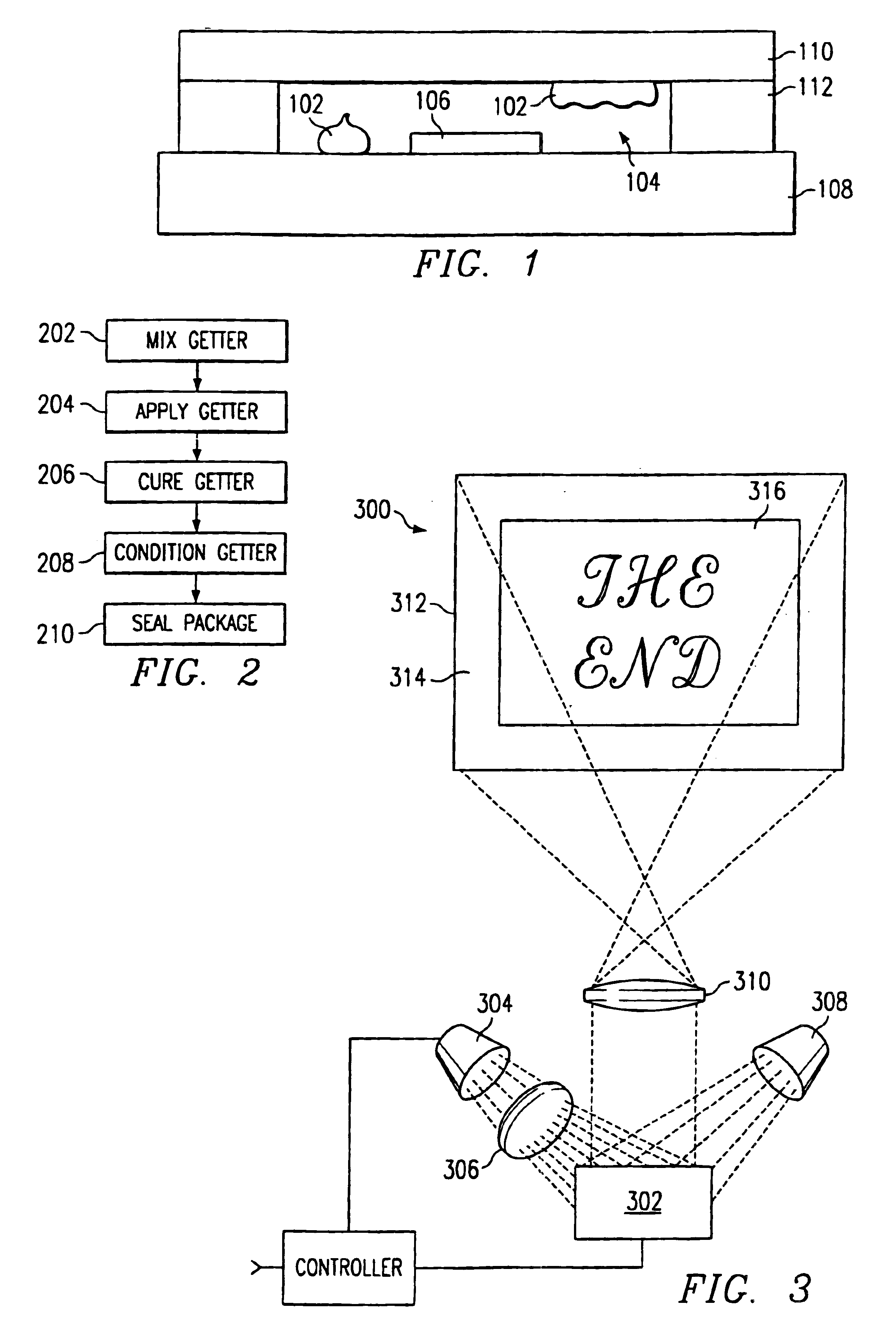Getter for enhanced micromechanical device performance
a technology of micromechanical devices and getters, which is applied in the direction of dispersed particle separation, other chemical processes, separation processes, etc., can solve the problems of not perfectly sealing out these elements over the life of the device, unsatisfactory use of existing getters compounds by many modern micromechanical devices
- Summary
- Abstract
- Description
- Claims
- Application Information
AI Technical Summary
Benefits of technology
Problems solved by technology
Method used
Image
Examples
Embodiment Construction
A novel getter, or desiccant, compound and method is disclosed. The disclosed getter, or desiccant, compound 102, shown in FIG. 1, performs a desiccation function as well as providing a reversible source / sink of passivation material in a headspace 104 in which a micromechanical device 106 is enclosed. While the following description describes its use with a PFDA surface treatment material and micromirror device, these examples are for illustration purposes and in no way limit the intended scope of the disclosed invention. The disclosed technology is ideal for any micromechanical device used with an acidic passivant.
The disclosed desiccant compound has two primary components, a polymer and a drying agent. The polymer acts as both a source and a sink for the surface passivation material, and holds the drying agent in place. The drying agent absorbs water vapor present in the enclosure.
Several classes of polymers are available for use in the disclosed desiccant compound. The preferred ...
PUM
| Property | Measurement | Unit |
|---|---|---|
| size | aaaaa | aaaaa |
| temperatures | aaaaa | aaaaa |
| temperatures | aaaaa | aaaaa |
Abstract
Description
Claims
Application Information
 Login to View More
Login to View More - R&D
- Intellectual Property
- Life Sciences
- Materials
- Tech Scout
- Unparalleled Data Quality
- Higher Quality Content
- 60% Fewer Hallucinations
Browse by: Latest US Patents, China's latest patents, Technical Efficacy Thesaurus, Application Domain, Technology Topic, Popular Technical Reports.
© 2025 PatSnap. All rights reserved.Legal|Privacy policy|Modern Slavery Act Transparency Statement|Sitemap|About US| Contact US: help@patsnap.com


